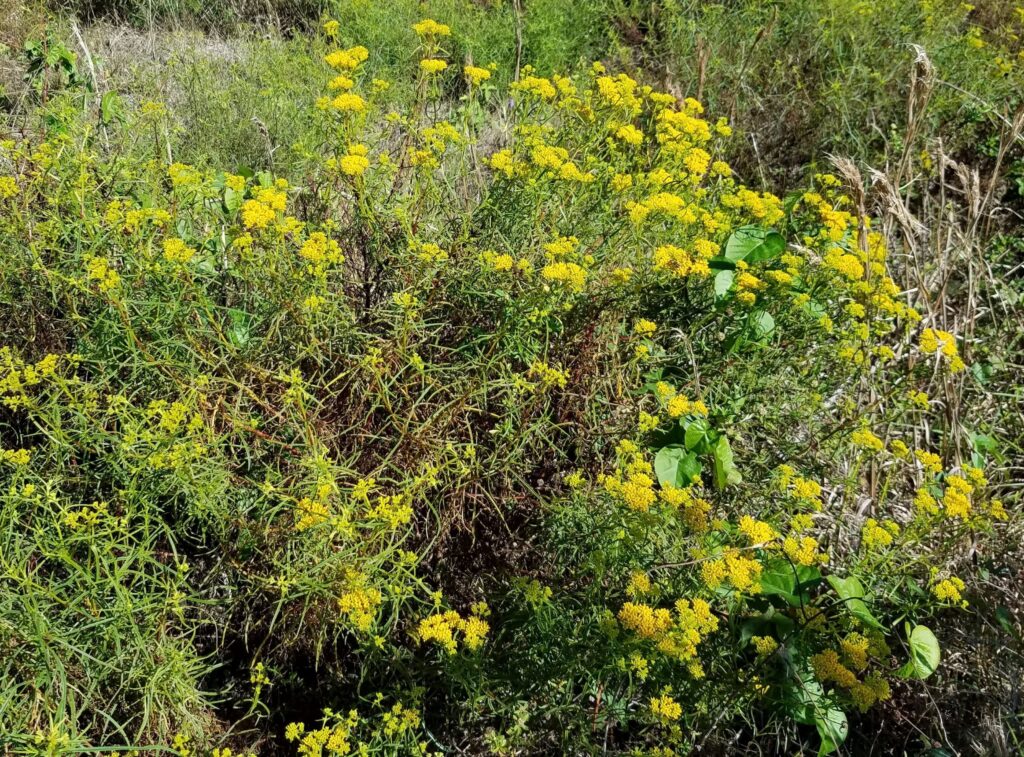
Narrowleaf Yellowtops
Flaveria linearis
Narrowleaf Yellowtops is a low, mounding, perennial wildflower found in most of Florida. The masses of yellow flowers occur from March to December in South Florida.
These attract bees, butterflies, beetles and other pollinators.
Do not confuse this with the invasive Coastal Plain Yellowtops, Flaveria bidentis. This plant is from South America and is spreading through our coastal areas and other parts of the world. For a good description of this plant click here. And for great pictures, Click here.
This invasive plant has three veins, serrated margins and some hairiness. The native Yellowtop has one prominent vein, entire (untoothed) margins and no hairiness. The leaves of the native are very narrow in the Florida Keys, yet tend to be a bit wider north of them.
I have found them growing along lake edges and along the coast near the dune line. They are tolerant of salt air, dry soil and do well during drought. The two foot high mounds make a colorful addition to the summer garden.
Cut them back to one foot tall when the flowers go to seed and the plant will grow back and flower again. Otherwise it will look weedy and may die as it puts all of its energy into seed production.
Be careful when you cut the stems. Wear gloves and long sleeves because the sap will make your skin itch. This takes about ten minutes and requires thorough washing and a half hour wait for the itch to subside.
Mix with Southern Beebalm, Salvia, Blue Curls, Spiderlily, Spiderwort, Pineland Croton, Sea Lavender, Seaside Goldenrod, Bay Cedar and Mimosa. It can even compete with Dune Sunflower for space.
Be aware that if you let it go to seed, there will soon be many seedlings coming up. This is good if you want to keep them going but a bit annoying if they get thrown about by a mower or dog running through them.
See page nine of this site for more information click here.